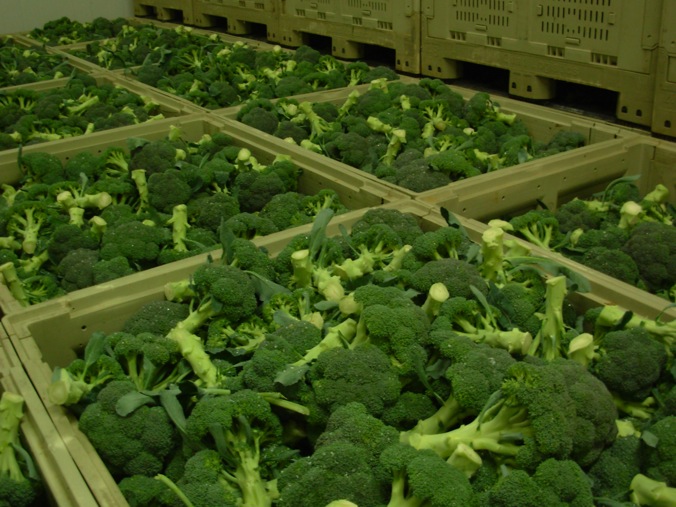Virginia Cooperative Extension evaluates broccoli varieties for $4.9 million study on promising East Coast industry

When it comes to buying local, the cornucopia of East Coast produce runneth over with apples, peaches, pumpkins, and potatoes. Broccoli isn't a major part of the bounty just yet, but Virginia Cooperative Extension agent Wythe Morris says he hopes to change that.
Morris is part of a team of industry and academic researchers who have launched an effort to develop a $100 million broccoli industry on the East Coast over the next 10 years by building grower networks in several production areas. The model for those networks is in Virginia’s Carroll and Patrick counties.
“As much as 90 percent of broccoli sold in the East is shipped from California and Mexico,” Morris said. “Establishing an eastern industry could reduce fuel costs, cut carbon dioxide emissions from cross-country trucks, and save water in the western United States.” It would also help eastern growers tap into a major specialty crop that is worth nearly a billion dollars a year and provide an example and infrastructure that could be used for other crops.
The effort is backed by a $3.2 million grant from the U.S. Department of Agriculture, with an additional $1.7 million in matching contributions from participating companies. The team, led by Cornell University, includes Virginia Tech, the U.S. Department of Agriculture (USDA), six other universities, and 11 companies.
The Virginia group, which includes Morris and Virginia Cooperative Extension specialists R. Alan Straw and Brinkley Benson, will evaluate broccoli varieties to find the ones best suited to the region. They will also develop new broccoli production guides, provide assistance to farmers who choose to grow the crop, and organize networks of growers and distributors.
Until recently, broccoli production in this region of the country has had two major obstacles: climate and lack of coordinated effort between various sectors of the industry. The project will address both challenges.
Recent developments in broccoli breeding have made plants more tolerant to eastern heat and humidity, and scientists will continue to work with seed companies and test sites to come up with hybrids to best suit regional conditions. At the same time, Extension specialists and economists will organize and expand grower networks, identify distribution channels, and assist with marketing.
Carroll County is a model for the larger project because it is home to many small farms and packinghouses. The regional market in Hillsville recently acquired a hydrocooler and ice-making facility, and Morris has been working with more than 100 farms to begin the GAP Food Safety Certification Process. “Our growers are proactive with respect to food safety,” Morris said. “Our first farms became certified in July, and we now have 10 farms and packinghouses onboard, with more in process.”
The region also benefits from a 1,200-foot drop in elevation that allow growers in the lower, southern parts of the county to begin harvest much earlier than growers in the mountains, extending the production season by 3.5 weeks.
“The USDA entrusted us with this project because we had put together a team that can take on this big challenge,” said Thomas Bjorkman, associate professor of horticulture at Cornell University and the project’s principal investigator. “We sought out Mr. Morris and the Virginia Tech Extension team because he has set such a great example there. The growers are well-organized and they have a wonderful food safety program. This project will allow them to expand their sales and reduce their crop risk.”
Morris’ growers have shown a great deal of excitement and enthusiasm about the project and its implications for future ventures. “As some of my farmers have said, once we establish a system for broccoli, it opens the market up for other crops,” he said.
For more information, contact Wythe Morris at (276) 733-2021.




